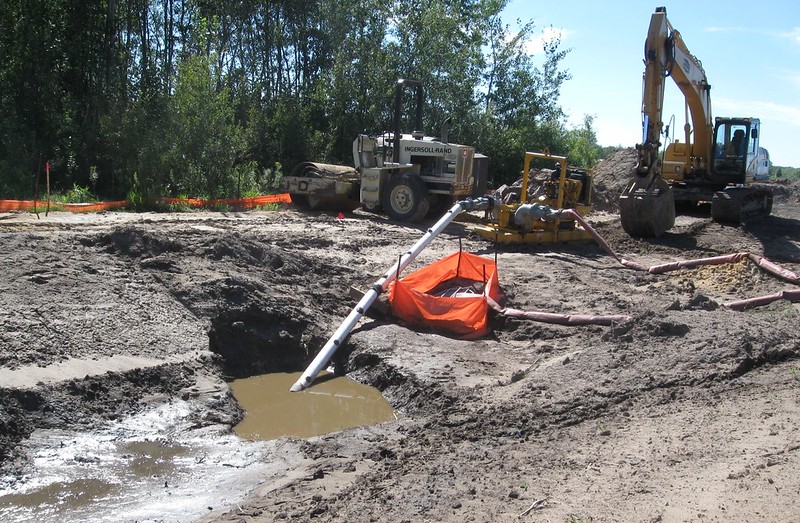Things to Look for When Renting Mechanical Dewatering Equipment
Table of Contents
- Understanding Your Dewatering Needs
- Types of Mechanical Dewatering Equipment
- Cost Factors and Budgeting
- Availability and Reliability of Equipment
- Supplier Reputation and Support
- Environmental Considerations
- Safety and Compliance Standards
- Long-term vs. Short-term Needs
When renting mechanical dewatering equipment, consider capacity, efficiency, and compatibility with your project needs. Evaluate rental terms, maintenance support, and supplier reliability to ensure smooth operation. Energy consumption, ease of use, and durability are also crucial for cost-effectiveness and performance, helping you achieve optimal dewatering results with minimal downtime.
Understanding Your Dewatering Needs
When approaching a project that involves managing water and separating solids from liquids, it’s critical first to understand your specific dewatering needs. Every project has its own set of difficulties, whether the amount of water must be eliminated or the makeup of the solids. Tackling this requires a strategic choice of mechanical dewatering equipment that can handle the tasks effectively. Evaluating these factors thoroughly streamlines operations and ensures that your approach is efficient and cost-effective, reducing potential unforeseen challenges.
Types of Mechanical Dewatering Equipment
In the world of dewatering, different equipment serves various functions, each with advantages and limitations. Here’s a closer look at some common types:
- Centrifuges: Centrifuges are designed to separate solids from liquids using centrifugal force. They provide benefits in terms of speed and efficiency and are especially effective for processing fine particles. However, their energy usage and possible operating expenses must be considered.
- Belt Filter Presses: Known for their ability to handle medium-scale operations efficiently, they are ideal for projects requiring continuous dewatering of sludge and slurries. They are robust and provide a consistent output, making them favorable for many industrial applications.
- Screw Presses: These have gained popularity due to their low energy requirements and consistent output. Suitable for a variety of applications, screw presses help maintain lower costs and provide reliable results, making them desirable for projects with long durations.
By being aware of these categories, you may increase productivity by choosing the equipment that best suits your project requirements and operational objectives.
Cost Factors and Budgeting
Financial planning is the cornerstone of any project, and renting dewatering equipment involves several cost considerations. Rental fees are often just the tip of the iceberg; you must also account for transportation, setup, maintenance, and potential downtime costs. Thorough market research and comparison can lead to significant savings. The initial rental might seem smaller than options like purchase or leasing, but you must weigh this against your project’s time frame and scale. Proper cost management ensures that you get the most value from your investment, making it crucial to balance price with the potential return on investment you anticipate from completing the project successfully.
Availability and Reliability of Equipment
Equipment reliability is a fundamental aspect of ensuring successful project execution. Choosing reliable equipment cannot be overstated, as frequent breakdowns can lead to costly delays. When renting, evaluate the availability and condition of the equipment you plan to use. Request detailed service records to understand how well the equipment has been maintained. Proactively securing reliable machinery will save time and money and contribute to maintaining a safe and productive work environment.
Supplier Reputation and Support
Selecting a trusted supplier for your dewatering equipment can significantly influence your project’s outcome. Reputable suppliers offer comprehensive technical support, routine maintenance services, and operator training, all of which can ensure smooth and trouble-free equipment operation. Building a partnership with such suppliers allows you to benefit from agile support, potentially preventing costly disruptions should technical issues arise. Engaging with suppliers with a proven industry reputation can also bring more favorable leasing terms and access to a broader range of equipment without unnecessary hassle.
Environmental Considerations
As awareness of environmental issues rises, your equipment’s impact on local and global ecosystems must be considered when renting dewatering machinery. Opt for machines designed to reduce emissions and operate efficiently. Energy-saving models minimize environmental impact and can result in financial benefits. According to EPA guidelines, implementing sustainable practices in large-scale projects significantly meets regulatory compliance while promoting eco-friendly operations.
Safety and Compliance Standards
The safety of your operation is non-negotiable—ensuring that your rented mechanical dewatering equipment adheres to the most updated OSHA guidelines is critical. Equipment compliance with industry standards is vital to minimize the risk of accidents. Additionally, ensuring staff are trained on safe operating procedures can significantly reduce the potential for on-site incidents. Regular safety checks and up-to-date maintenance records ensure all equipment functions as intended, maintaining a safe work environment for all stakeholders involved.
Long-term vs. Short-term Needs
Before deciding on renting, consider the duration of your needs. For short-term, temporary projects, renting dewatering equipment might provide the flexibility and cost-effectiveness you seek. However, if you foresee ongoing or repetitive projects, investing in purchasing may yield a better return in the long haul. Each pathway presents unique advantages and drawbacks, and your decision will hinge on the economic analysis and logistical needs specific to your project.
